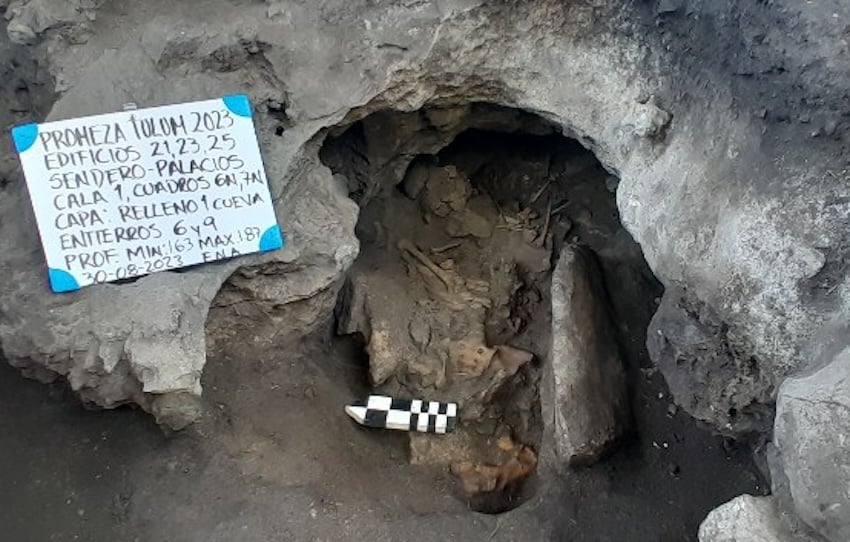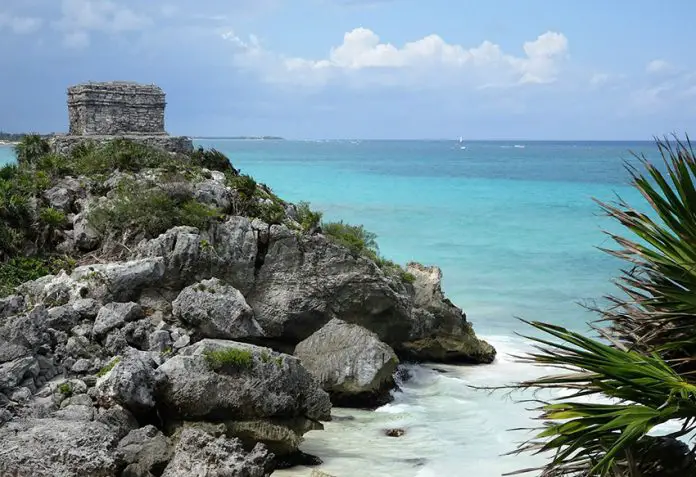Mexican archaeologists continue to investigate a cave found late last year in Tulum, Quintana Roo, with 11 human remains that belonged to upper-class people of the time.
Along with the remains, archaeologists found offerings of marine animals, including fish, turtles, snails, shells, parrot fish, manta rays, tiger sharks, barracuda, sea turtles, land turtles, mammals and feline bones that could be from a jaguar or ocelot.
Archaeologists also found a ceramic molcajete from the Late Postclassic period (A.D. 1200 to 1500) inside the cave.
“The significance of the discovery is the location within the walled city between the Palaces of Halach Huinic and Columns,” archaeologist José Antonio Reyes Solís, coordinator of the Program for the Improvement of Archaeological Zones (Promeza), told news outlet EFE on Sunday.
The cave, which is 9 meters long by 6 meters wide and has three chambers, was discovered in December 2023. According to the archaeologists, the cave entrance was blocked by a large rock placed on top of human bones.
The remains inside the cave were transferred to the laboratories of Quintana Roo’s National Institute of Anthropology and History (INAH) for further study.

Although the excavation work has been completed and the cave has been covered to preserve it, EFE reported that it could possibly open in the future to receive visitors.
The cave is just one of the secrets of Tulum, a site that has been investigated since the 1920s and 1930s.
“Some buildings went through specific research in the ‘90s,” Reyes said.
Tulum, which means “walled city,” sits on a cliff above the Caribbean Sea. It hosts some of the most important archaeological remnants in Mexico, after Chichén Itzá and Teotihuacán.
“It is important for the number of visitors it receives per year and culturally speaking it stands out for its location in the Caribbean, a trade route that goes from Central America to the Yucatán Peninsula,” Reyes explained.
In addition to the cave, INAH reported rescuing and restoring seven figures of the Maya deity known as the “descending god” in buildings at Tulum.
The Maya god is associated with rain, the setting sun, lightning, bees and Venus. A temple in the deity’s honor is found next to the Castle of Tulum.
“Although [it is found] in several places in Mesoamerica, the descending god is the emblematic figure of the Eastern Costa Maya region,” the head of the restoration project, Patricia Meehan Hermanson, told EFE.
With reports from La Jornada Maya
